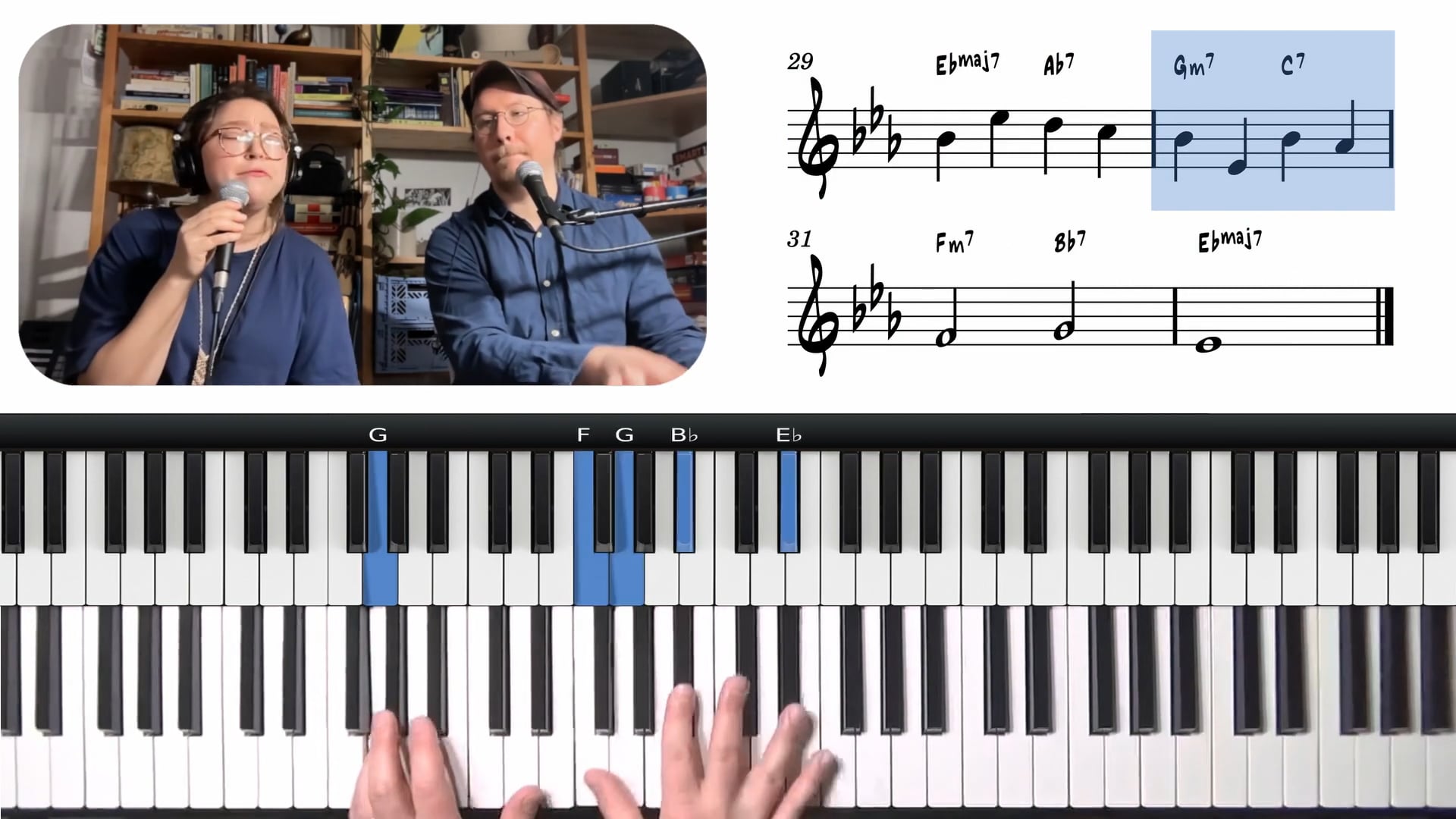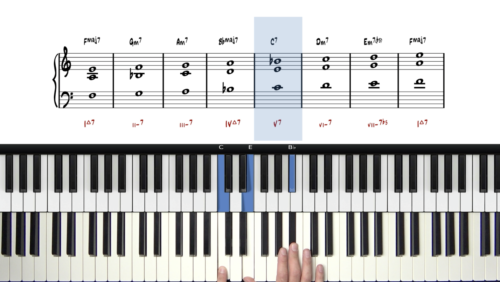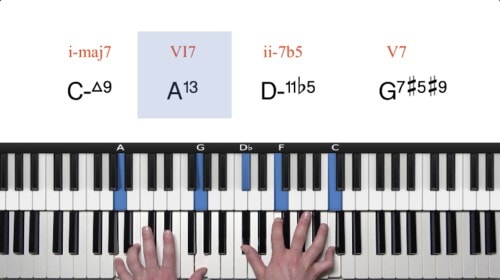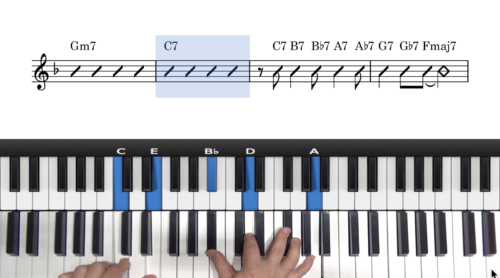Intros & Outros For Vocal Accompaniment
Welcome to lesson 5 of our Jazz Piano Vocal Accompaniment Course. In this lesson, we focus on the critical skill of starting and ending a tune effectively when accompanying a vocalist.
A strong intro sets the tone, and a clean, expressive outro provides a satisfying close to the performance. This lesson explores practical approaches to intros and outros and how to communicate musical ideas non-verbally with your vocalist.
Starting the Tune: Intro Techniques
There are countless ways to begin a tune, but in this lesson, we explore a few tried-and-tested intro techniques that provide clarity and cohesion between the pianist and vocalist.
Using the Last 4 or 8 Bars as an Intro
One of the simplest and most effective ways to start a tune is to play the last four or eight bars of the song. This creates a sense of familiarity and naturally leads into the vocal entrance. Pianists can either include the melody or play only the chords — many vocalists prefer the latter so the entrance of the melody feels fresh.
Creating an Underscore During Speech
When a vocalist introduces a tune with a story or comment, it’s a great opportunity to start playing softly beneath their speech. This removes awkward silences and creates a seamless transition into the performance. Simple voicings, such as a 1-6-2-5 progression, work well to create a musical background without stealing focus.
Turnarounds: 1-6-2-5 and 3-6-2-5
Using a turnaround such as 1-6-2-5 (or substituting the 1 for a 3 chord) can establish the key and feel of the song. We can cycle around this progression many times whilst the singer is preparing to start the song.
When the first chord of the tune isn’t the I chord, be sure to adjust the turnaround to resolve correctly to the actual starting harmony. A relatievly common starting chord for jazz standards is the ii-7 chord. This can be approached by a VI7 chord, and also a longer progression such as I – IV7 – iii-7 – VI7 —> ii-7.
Ending the Tune: Effective Outro Techniques
Ending a tune with clarity is just as important as beginning it. Here we explore common outro techniques and how to use them in real-time performance.
Repeating the Last 4 or 8 Bars
This is the most common method — simply loop the last section of the tune and build a cadence into the final chord. Some tunes, such as "There Will Never Be Another You," may require you to repeat specific bars (e.g., the 3rd and 4th bars from the end) multiple times before finishing.
Communicating Endings with Hand Signals
Since endings can vary depending on the moment, vocalists often use hand gestures or visual cues to indicate how many repetitions of the outro section will occur. Clear communication and mutual understanding of these signals are crucial, especially in jam sessions or performances with minimal rehearsal.
Final Chord Voicing Based on Melody Note
When ending the song, the voicing of the final chord should reflect the last melody note sung. Options vary depending on whether the note is the root, 3rd, 5th, 7th, 9th, or even the sharp 11:
- Root: Standard 6th voicing or simple embellishment.
- 7th: Try voicings with a triad a half-step down from the root for a diminished color, eg, Dmaj/Eb.
- 9th: Use lydian-inspired upper structures such as an F triad over Eb.
- Sharp 11: Strong modern sound — commonly heard in contemporary interpretations.
Regardless of the note, if you’re unsure, it’s always safe to land on a clear and simple voicing such as the tonic 6th chord.
Practice Tips
-
Master Turnarounds: Practice 1-6-2-5 and 3-6-2-5 progressions in all keys to use them confidently in intros.
-
Memorise Outro Forms: Identify and memorise common outro patterns for standards like "There Will Never Be Another You".
-
Practice with a Vocalist: Rehearse hand signals and cueing with a singer to develop mutual understanding in real time.
-
Match Melody Notes in Endings: Train your ear to catch the final melody note and choose chord voicings that match or enhance it.
- Create Simple Underscores: Use soft, diatonic chord progressions to accompany vocalist storytelling or spoken intros and transition seamlessly into the performance.







